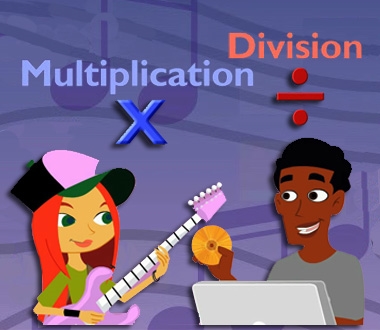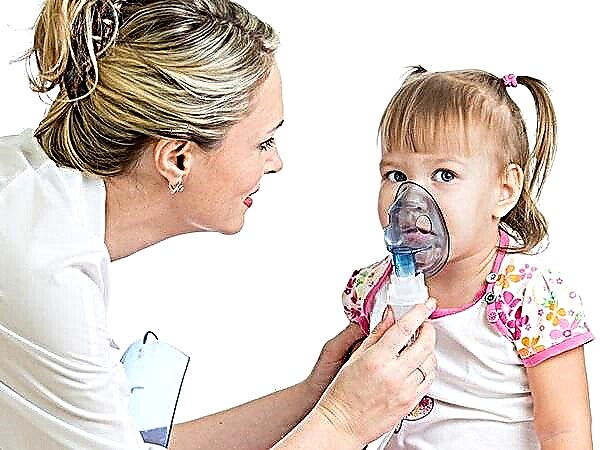
Any parents sincerely rejoice at the success of their child, because this is not only an indicator of the full development of a little man, but also the growing independence of the child, gradually untie the hands of adults. That is why the acquired skill of using a spoon is one of the very important milestones in the development of a child, because now he will at least be able to eat on his own. Many parents are racking their brains over how to develop such a skill - let's try to figure out how it's done.

Optimal age
Of course, the initial training of any complex skill requires a good teacher, and for a kid, believe me, eating with a spoon on his own is not an easy task, because he was born with practically no control over his body. For this reason, in many respects, it depends on the wishes of the parents when their child begins to eat on his own. At the same time, you should not rush to this either - you can come to the conscious use of cutlery only gradually, having previously mastered the skills of holding objects in your hand.
Experts point out that the specific timing of the acquisition of skills in using a spoon strongly depends on the individual characteristics of the child. The average indicators say that at the age of one year, the baby should simply be able to hold the spoon for a long time without dropping it - then by about one and a half years he will already be able to use it for its intended purpose.
Naturally, certain deviations from the schedule are quite possible and cannot even be considered an obvious problem - for example, some small individuals know how to use the device a little by ten months, and someone even at two years old requires feeding.

At the same time, child psychologists note that in the learning process the personal interest of the child in the process is extremely important... It is no secret that children are very fond of imitating adults in everything, and on average, for about a year, the baby begins to think about whether or not to start eating on his own. Naturally, for such conclusions, he need a constant visual example of how adults eat on their own, otherwise the mother's hand can be perceived by the same device as the spoon itself.
If there is an example in front of your eyes, and the child understands everything, sooner or later he will make it clear that he would like to try to wield the cutlery on his own. We can say with absolute certainty that the child will not succeed either the first time or the tenth, therefore the mother should prepare in advance for the dirty table, clothes and baby's face. Nevertheless, you should not refuse a child - after all, he will never learn if he does not start learning. note that it is essential to exercise angelic patience during training, because, once yelling at a sloppy kid, you can scare him, and he will generally give up trying.
Remember that he does not stain everything around him out of malice, but simply because he has not yet managed to do everything neatly.


Choice of cutlery
If you purposefully go to teaching a child how to use a spoon, the latter should be bought specifically for this purpose, making sure that it corresponds in all respects to the task at hand. Practice shows that if the spoon itself is chosen wisely, then the study is easier, and there are fewer dirty things.
So, here are some tips on how to choose the first device in your baby's life.
- Instrument safety - the most important requirement. The child is still sloppy, so in no case should the spoon have sharp ends or edges. A classic metal device is also unlikely to work - it can turn out to be too heavy for a baby, and if it falls down, it can hurt and scare. When choosing a product from alternative materials, pay attention only to the range of specialized stores that provide all the necessary certificates - today's plastic can be extremely harmful.
- The bait attachment and the first spoon are not the same thing.... In the first case, a narrow and rather deep scoop is used, since neat parents will operate the device. As for the product for self-catering, first of all, it should have a certain width - this allows you to drop food less often.
- A novice gourmet will by no means hold a spoon correctly, as adults hold it - it is easier for him to grab the handle in a fist. With an elongated and narrow shape of the handle with such a grip, a stable position of the device cannot be achieved - it will periodically rotate around its axis, spilling mashed potatoes and spilling soups. For this reason you should find a product whose handle would be relatively wide - this will stabilize the spoon from "rolling". In addition, the handle should ideally be shortened - the closer the child holds the device to the scoop, the higher the likelihood that it will still reach the mouth.
- Many experts claim that it is better for kids to learn models with curved handles - they are a little more convenient for a child's hand. There is also a rather rare version with a rod inside - there the ladle always maintains the correct position, even if the handle is tilted. Such a spoon is good because you can master it much faster, however, it, in fact, does not teach you how to use an ordinary spoon.
- Of the whole variety of children's models of spoons, often it is advised to pay attention to plastic, even despite all the information that many varieties of this material do not shine with environmental friendliness. Such a product has a lot of advantages - it is both light and not sharp, it cannot be hit, it does not break when dropped, and it is often painted in bright colors. A beautiful plastic spoon can be perceived by a child as a toy, it attracts interest, and therefore learning will go faster.
- Simplify the task not only for the child, but also for yourself - buy additional accessories. The plate should ideally also be made of food grade plastic - then it will have all the same advantages that have already been described just above. Some models especially for small children are produced with a suction cup - even with targeted action, it will be difficult for a baby to overturn such dishes. Another useful tool is a cloth bib to help protect your clothing from spills. A plastic apron can be an even more effective alternative - it does not absorb water, so it does not need to be washed after every meal.
Subtleties of learning
It is impossible to teach a kid to use a spoon without his voluntary desire - so far he does not know the word "must" at all. In fact, there are no tricks to stimulate interest, and the only thing that can be thought of is to regularly sit down at the table with the whole family. As already mentioned, even a small child strives to inherit adults in everything - this is an incentive to learn how to properly hold a cutlery himself.
It is unacceptable to force a child to learn if he does not show any interest in this - you will not drive a layer of knowledge into his head, but you will achieve hysteria and a categorical rejection of what he does not like.


Even worse, if you force the baby to train on a dish that he would not eat even with your help - then you should not be surprised why the child has no incentive.
It will not work to accustom your child to cutlery before he is interested in them, but as soon as he shows interest, be ready to satisfy curiosity. Your first workout shouldn't be too hard - it is enough to at least ensure that the baby reliably fixes the device in his hand, even if in a slightly wrong position.
Experts say that it is not worth waiting for a "suitable age" on purpose - if suddenly the child is interested in a spoon at the stage of the beginning of feeding, you can already acquaint him with this subject.

The instruction for targeted learning is as follows:
- all surfaces in the vicinity of the "training ground" should be protected with glued materials - first of all, it concerns the floor and table;
- if the dish has a suction cup, fix it on the table top and check the reliability of the fastening, then add food;
- it is best to start training in the summer, when the child can be undressed almost completely - then practically nothing will have to be washed, however, a cap will definitely not hurt to protect the hair;
- show a good example: grab the child's attention, taste the food from his bowl with a spoon and do not forget to praise both the food itself and yourself for independence;
- pass the spoon to the child, and if he cannot hold it tightly, squeeze the child's fist with the spoon in your palm and feed the baby that way;
- when the ward learns to regularly bring the spoon to the mouth, there is no need to help him, even if he is constantly getting dirty - this is a difficulty that must be overcome on your own.


The child gets tired quickly and can put the device aside without finishing it - praise him at least for what he tried, and do not forget to feed the child.
Frequent mistakes
Often, adults themselves are to blame for the fact that the child cannot learn the art of using a spoon for too long.
Let's look at some examples of how not to approach the learning process.
- If we have already begun to teach the child the independent use of cutlery, let all other household members adhere to this rule.... Children have too short memory, they easily forget the newly acquired skills if they are not needed constantly. Therefore, it is enough to send the child for a few days to visit a compassionate grandmother, who will feed him with a spoon - and that's it, you can start anew.
- Exercise regularity is important for the solid acquisition of new skills.however, certain situations do occur when, as an exception, you can briefly return to spoon feeding. This is done when the child is sick or does not feel well. Even an adult, experiencing severe discomfort, can perform the usual tasks inaccurately, not paying enough attention to them, so you should not be surprised if a sick baby suddenly has difficulties with eating independently. Sometimes it will be easier to help him a little than to wash the entire dining room and comfort the hungry child.
- Even if the child seems to have managed to master independent nutrition well, at first it is unacceptable to leave him to eat alone.... First of all, the child can choke on an unchewed piece, but it still cannot really call for help. Tired of wielding a spoon, but never having eaten, it will surely cry, and you will not be able to understand what is the matter. Finally, in the absence of control, the child may simply start to be capricious, and you, relying on his responsibility, after the allotted time will find him over a still full plate or in the middle of a soiled kitchen.
- It is generally accepted that cutlery for a child necessarily begins with a spoon, but individual children are much more interested in a fork - if this happens, it will not work to replace it with a spoon, the baby will not show interest in learning. Special forks with blunt teeth also exist, by their example, training can also be carried out - at least how to properly hold the device in your hand.
Of course, the dishes that are served for training can no longer be either liquid or puree.
For how to teach a child to eat with a spoon on their own, see the next video.



